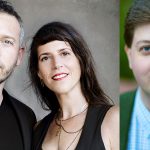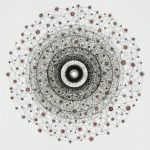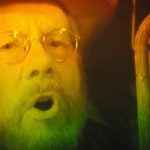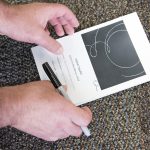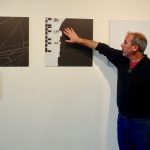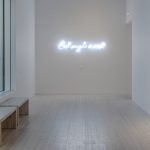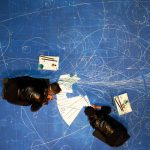art
From WDCB’s First Light, Nov. 17, 2019: It’s hard to imagine the number of experiments that have been conducted and the discoveries made at Fermilab over its more than 50-year history. Fermilab photographer Reidar Hahn, who had rare access to many of those tests and scientific advances for more than 30 years of the lab’s life, is preparing to step down. Hear what Hahn, Fermilab Director Nigel Lockyer and Fermilab Art Gallery curator Georgia Schwender have to say about Hahn’s work in this 14-minute piece.
From SDPB Radio’s “In the Moment: Innovation,” July 26, 2019: In this 7-minute radio piece, Fermilab 2018 artist-in-residence Adam Nadel talks about a musical composition he wrote based on neutrino experiment data. When neutrinos interact with other particles inside an argon detector, those interactions are recorded by thousands of thin wires. Nadel transcribed the wire over time onto a musical score.
In the world of particle physics, scientists work with tiny, invisible particles, tracking their collisions and interactions with one another. But what if you could render them as music? What would these songs of the subatomic sound like? Adam Nadel, Fermilab’s 2018 artist-in-residence, worked with scientists at Fermilab and set out to do just that. Read on to hear his music.
A Swedish university tapped the founding director of CERN’s artist-in-residence program to curate a new art exhibit inspired by physics. The pieces are not literal translations of physics concepts to other media or illustrations of physics principles or phenomena. Physics was a spark for the artists, sometimes very clearly and sometimes more tangentially.
One sprinkle of sand at a time, two artists have recreated the moment a particle passed through a detector 30 years earlier. Their piece, a bright blue and white sculpture of tracks of microscopic bubbles in a bubble chamber, was inspired by the Tibetan Buddhist tradition of the sand mandala. To find the perfect bubble chamber image to recreate, they scrolled through hundreds of these photographs in the archive at Fermilab.

